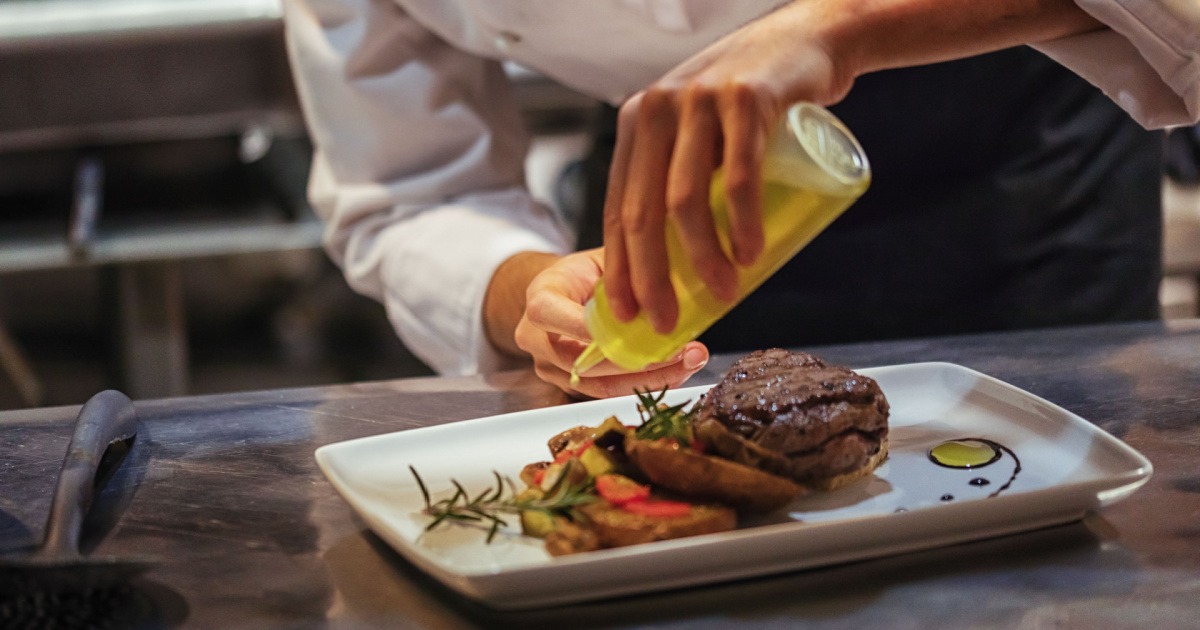Last updated on June 22nd, 2023
We’ve talked a lot about hospitality and restaurant food trends on this blog. But senior living communities are their own subset of the food service industry and sometimes see different trends because of the populations they serve.
Your dining team caters to a group of people that most likely have different tastes and preferences than the overall population. That’s why we looked at the communities we work with to figure out what trends and innovations are happening inside their dining rooms. Here are the trends we found and how you can incorporate them into your community in 2020.
1. More Variety
Nobody wants to eat the same thing every single day. And nobody wants just one option when they sit down for a meal. Think about going to a restaurant. Part of the fun is looking through the menu and figuring out what you want to eat. Residents don’t get to experience this if you’re only serving one or two options at breakfast, lunch, and dinner. We’re seeing a lot more of our communities offer restaurant-style menus with made-to-order options. Giving residents more dining choices is a key component of person-centered care.
Offering more choices also applies to residents who are required to follow stricter or modified diets. You must have a dining team that’s able to create a tasty menu full of variety for those who might need modifications, like pureed foods or finger foods (more on that below!).
Don’t know what to put on the menus? Ask your community! Check-in with them occasionally to see if they have any feedback about your dining program. What foods do they like and dislike? What do they want to see more of on the menu?
When it comes to variety, you can also think beyond the food you serve. Consider giving residents choices about when and where they’d like to eat as well. Again, think of the restaurant model. There’s no strict time you have to show up at a restaurant to eat. You can walk in at any time during service hours, order what you want, and leave when you want.
2. A Focus on Wellness
Health and wellness aren’t all about what’s on the plate or just about a person’s physical health. Overall wellness is about someone’s mental, emotional, spiritual, and social state as well. And more and more dining programs are realizing that they can help improve these other aspects of a resident’s well-being.
This report from Senior Housing News advises senior living communities to take a cue from hotels and learn from their innovative wellness practices. Some hotels offer exercise and meditation classes throughout the day, as well as healthy cooking classes led by chefs. And again, if you don’t know which wellness options your residents want to see, just ask them. By getting their input, you can ensure that your program actually meets their individual wellness needs.
3. Specialized Programs for Independent Eating
You may have some residents in your community who need to follow different diets or programs due to a medical condition. These residents deserve a dining program that gives them the same variety and ability to eat independently as your other residents do. That’s why many senior living communities are establishing specialized dining programs to serve residents with certain conditions.
For example, Culinary Services Group has three premium programs we can implement in the communities we work with. Appeal is a Texture-Modified Foods Program that allows residents with dysphagia to eat safely. We artfully shape and present pureed foods to make them look familiar, appetizing, and comforting. Empower is our Finger Foods Program that helps residents with dementia eat independently by offering a variety of freshly prepared finger foods. The Enhance Program is a Fortified Foods Program that helps combat malnourishment. We fortify familiar foods to promote weight gain and support food intake.
4. 24/7 Dining
As we mentioned above, variety in your dining program doesn’t just refer to what’s on the plate. Senior living communities are beginning to offer dining options at all hours of the day to satisfy more appetites. We’re not saying that your chefs need to cook up a made-to-order omelet at 3 am. Communities across the country have implemented 24/7 dining by offering grab-and-go meals and snacks. Many residents might not want to eat in the dining room every single day, so grab-and-go options also let them dine privately in their rooms on days when they want more “me time.”
5. Entertainment Programming
We’re starting to see dining programming extend beyond the four walls of the cafeteria. With all of the TV shows, Instagram accounts, and YouTube videos dedicated to cooking and recipes, food is now entertainment.
There are a few simple ways to turn dining into entertainment programming in your community. One of our favorites is to host a cooking class/demonstration. Your residents will watch and learn how your chefs prepare some of their favorite dishes. We also love hosting healthy cooking competitions. Do it Iron Chef-style and see which team of residents in your community can create the best dish using a secret ingredient, like quinoa or cauliflower.
All of these trends complement a person-centered care environment. You’re giving your residents more choice, independence, and better all-around health. Incorporating these trends into your community’s day-to-day will not only improve their lives but also give you an edge when it comes to marketing your senior living community to potential new residents and caregivers.
If you’d like to learn more about how Culinary Services Group can help you bring all of the above trends to your senior living or behavioral healthcare community, contact us today.








